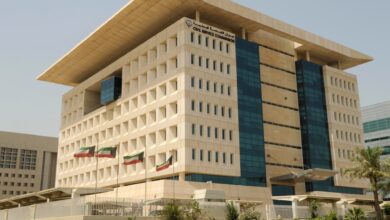15% of solar sites in Kuwait can exceed annual power needs
The study found that 80.2% of the most suitable solar energy sites are in Al-Ahmadi, with the remainder in Jahra, making both governorates ideal for solar system placement.

• As the government tackles summer power outages, a Kuwait University study shows Al-Ahmadi and Jahra the top sites for solar photovoltaic systems, covering 2,515 square kilometers, or 14% of Kuwait’s land.
• Kuwait and other Gulf nations are expanding renewable energy to support sustainable development, reduce environmental degradation, and transition to a green economy.
• Kuwait has identified four main indicators to assess the potential for solar energy systems, which include, solar radiation levels, natural suitability of the land, cost effectiveness and availability of land for development.
As the government intensifies efforts to address summer power outages, a study by Kuwait University’s Center for Gulf and Arabian Peninsula Studies reveals that Al-Ahmadi and Jahra governorates are the most viable locations for solar photovoltaic systems. These areas span 2,515 square kilometers, roughly 14% of Kuwait’s total land area, according to Al Rai newspaper.
The study indicated that a significant portion of the most suitable sites is located in the Al-Ahmadi governorate, accounting for approximately 80.2%, while the remaining sites are in the Jahra governorate. It also highlighted that only 15% of these sites can be utilized to ensure a sustainable electricity supply, exceeding the total annual electricity generation in Kuwait.
According to the study, the total electrical energy that could be generated from these optimal sites is estimated at 70.213 GWh/year, representing about 106% of Kuwait’s total electricity production in 2016, which was estimated at 65.950 GWh/year.
Identifying the most suitable locations for setting up solar power plants
The study outlined the criteria for identifying the most suitable locations for establishing solar power plants in Kuwait using geographic information systems. It proposed a model based on four key spatial indicators: solar radiation levels, natural suitability, cost-effectiveness, and land availability.
The study further emphasized that clean and renewable energy sources offer numerous advantages over fossil fuels, as they are typically free, widely available, and have minimal negative environmental impacts.
In this context, many countries, including Kuwait and other Gulf nations, are making significant efforts to expand the use of clean and renewable energy sources to ensure energy diversification, transition to a green economy, and achieve sustainable development.
The study highlighted that clean and renewable energy sources are among the most critical strategic alternatives for reducing environmental degradation and global warming caused by the extensive consumption of fossil fuels. These sources have the potential to meet the growing global demand for energy in the future, thereby supporting sustainable development.
Per capita electricity use doubles Germany’s amid 55% growth
The study noted that Kuwait’s electricity sector has experienced steady growth over the past three decades, with per capita electricity consumption rising from 11 MWh in 1995 to 17.1 MWh in 2020—a 55% increase from 1990 to 2020.
It also emphasized that per capita electricity consumption in Kuwait is double that of some developed countries, such as Germany, where it stands at approximately 7 MWh, and exceeds that of the United States, which is around 13 MWh per capita.
Most suitable sites for solar photovoltaic systems
The results identified areas with high values on the composite suitability index, exceeding 0.7, which were converted into a directional layer (vector) containing polygons representing the most suitable locations for solar energy systems.
Since these systems require large areas, smaller areas were excluded. It was found that the most suitable sites for solar photovoltaic systems are located in the western, central, and southern regions of Kuwait, covering a total of 2,515 square kilometers—about 14% of Kuwait’s total area. A significant portion (80.2%) of these suitable locations is in Al-Ahmadi Governorate, with the remaining percentage in Jahra Governorate.
High temperatures biggest challenge to expand solar energy in Kuwait
The study highlighted several challenges to expanding solar energy in Kuwait, the most significant being high temperatures, especially in summer, which negatively affect the efficiency of solar photovoltaic systems and reduce the electricity they can generate.
It emphasized that addressing this issue requires further studies focused on improving the efficiency of solar photovoltaic systems under high-temperature conditions.
Criteria for site selection
The proposed methodology for conducting a multi-criteria suitability analysis to determine the optimal positioning of solar energy systems in Kuwait consists of four main steps: location selection, data preparation, development of a composite suitability index, and optimal positioning.
The study focused on determining the criteria for site selection by preparing a list that includes solar radiation levels, ensuring that the selected sites receive the highest amount of solar radiation.













